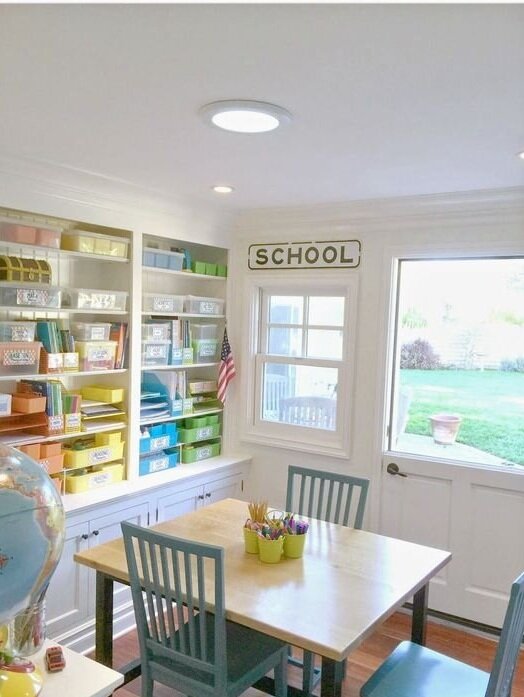As the summer comes to an end, students are gearing up for what is sure to be an interesting school year in Fall of 2020. As a result of the COVID-19 pandemic, many schools will not be open for in person learning- instead everything is going to be virtual until January of 2021.
Although this new way of schooling may take some adjusting for both children and their parents, homeschooling can be immensely rewarding. It’s crucial to prepare the best homeschool space for your child to ensure his/her learning goes smoothly. You don’t have to replicate a traditional school classroom to teach your child yourself, but modifying your home to create a peaceful and inspiring environment can pay huge dividends in terms of productivity and learning.
Here are a Few Tips to Create the Ultimate Home Classroom:
Natural light - Light and bright spaces are generally better for learning and creativity. Pick a place with large windows to let natural light into the space. Avoid basements or garages if they are not properly insulated or have minimal natural light. You’ll also need good artificial lighting to ensure the students can see their work clearly.
Keep it comfy, but not too comfy - Introduce throw pillows and rugs to your homeschool space to soften the feel. Students can lie down comfortably to read, however, don’t make it too comfy, or you might end up with sleeping students.
Add lots of color - Adding color will make the space fun so that your children will want to learn. Introduce fun colored storage bins, throw pillows, artwork, and more. This will also make the space more visually noticeably a classroom, rather than a room in your home. This is important to keep children focused.
4. Wall space for maps, whiteboard, art, and posters - Wall space is a really useful accessory for a home classroom. Rotate spelling words, quotes, and educational posters. Whiteboards are great additions for teaching math equations. Consider painting a section of the wall with chalkboard paint instead of buying one. Children will think it’s really cool to be able to write directly on the wall, and it will save you money and space.
5. Spill-proof flooring - Students may be tasked with art projects or science experiments. To avoid any messes, choose to set up your home classroom in an area of the house with woof, tile, or laminate flooring for easier cleaning.
6. Baskets and Bins for supplies - Store school supplies in baskets and bins. These a great for craft supplies, pencils, papers, workbooks, musical instruments, and more. Make sure to label them for organizational purposes.
7. Take advantage of the outdoors - Create a relaxing outdoor spot for reading when the weather is nice. Students will appreciate getting out of the house for an hour or so during the school day.
8. Bookcases - Keep low, waist height bookshelves for workbooks and supplies. They will always be in reach and you can use the top surface to display crafts or set up learning centers for different activities.
9. Alternative seating - If you have a restless learner, try having them sit on yoga balls or bean bag chairs. Alternative seating might help absorb some of their energy so they can focus.
10. Computer station - In the digital world, your student is going to need access to technology, probably in the form of a computer or tablet. You’ll want to create a computer station that is accessible, but also separate from where hands-on learning takes place.
Source Cited: Bigrentz.com
Photos Courtesy of: Pinterest








